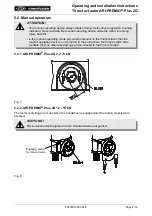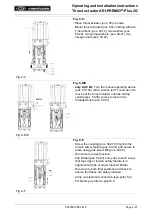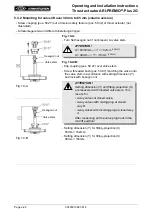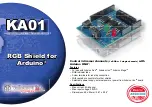
Page 2-32
0040501006 3814
Operating and installation instructions
Thrust actuator ARI-PREMIO
®
-Plus 2G
5.6 Special functions
5.6.1 ECONOMY-Wear reduction program
The
Economy ON
position is designed to minimise wear.
In this position an adaptive hysteresis band (also referred to as the dead band) is applied to the
desired position in order to reduce the wear on the valve and the actuator.
The desired position is determined by the analogue control signal Yin, or if the actuator is set to 3-
point operation by the length of the control pulses, which are then converted to a desired position by
the electronics.
The factory setting for the hysteresis band is ±0.5%. If the desired position remains within the
hysteresis band relative to the actual position
,
the change is ignored. The actuator is only corrected
if a larger deviation occurs outside the hysteresis band
If the actuator signal changes direction more than six times in one minute because all deviations of
the desired position were outside the current hysteresis band, the band is widened and the next
larger step set.
There are six possible hysteresis steps:
If the actuator specifies fewer than two direction changes within one minute, the next lower step is
set.
5.6.2 Temperature management
The aim of the temperature management function is to prevent internal overheating. The
temperature of the printed circuit board is measured close to the controller for this purpose and
divided into the following categories:
"CDF" is the cyclic duty factor of the actuator motor. It describes the ratio of motor running time to
motor running time plus idle time.
Temperature management is only active in Economy mode. Step 3 is also effective if Economy
mode is deactivated.
Step
Hysteresis band
1
± 0,5%
2
± 1%
3
± 2%
4
± 3%
5
± 6%
6
± 10%
Step
Temperature
Reaction
1
> 80°C
CDF = 80%
2
> 90°C
CDF = 50%
3
> 110°C
CDF = 20%, yellow LED lights up
(out of specification)
















































